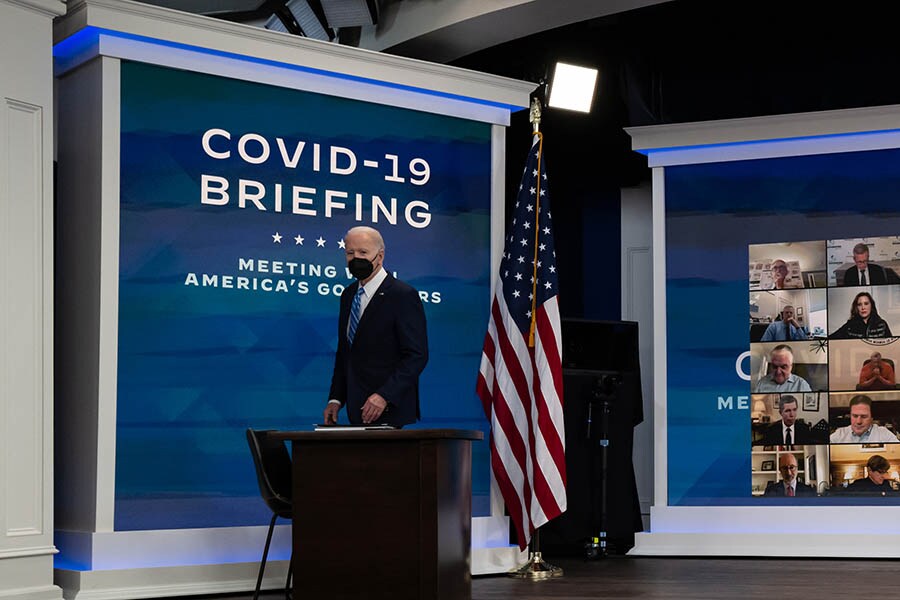
Will shortened isolation periods spread the virus?
The US Centers for Disease Control and Prevention (CDC) has recommended to cut isolation periods for infected people from ten days to five in addition to not recommending rapid testing before people left isolation
 President Joe Biden joins a virtual meeting of the White House COVID-19 Response Team at the White House in Washington, Dec. 27, 2021. The decision by federal health officials to shorten isolation periods for Americans infected with the coronavirus drew both tempered support and intense opposition from scientists. Image: Cheriss May/The New York Times
President Joe Biden joins a virtual meeting of the White House COVID-19 Response Team at the White House in Washington, Dec. 27, 2021. The decision by federal health officials to shorten isolation periods for Americans infected with the coronavirus drew both tempered support and intense opposition from scientists. Image: Cheriss May/The New York Times
The decision by federal health officials to shorten isolation periods for Americans infected with the coronavirus drew both tempered support and intense opposition from scientists Tuesday, particularly over the absence of a testing requirement and fears that the omission could hasten the spread of the highly contagious omicron variant.
The new guidance, coming amid a crush of new infections that has starved many hospitals of workers, seemed to some scientists like a necessary step to shore up workforces in essential industries. And encouraging people to leave isolation early after testing negative could spare them the hardships of prolonged periods at home.
But letting hundreds of thousands of infected people forgo those tests — even if, crucially, their symptoms were not entirely gone — risks seeding new cases and heaping even more pressure on already overburdened health systems, experts said Tuesday.
“To me, this feels honestly more about economics than about the science,” said Yonatan Grad, an associate professor of immunology and infectious diseases at the Harvard T.H. Chan School of Public Health, who has tracked coronavirus infections in the NBA.
“I suspect what it will do is result in at least some people emerging from isolation more quickly, and so there’ll be more opportunities for transmission and that of course will accelerate the spread of COVID-19,” he added, noting that people were unlikely to adhere strictly to masking advice after leaving isolation.
©2019 New York Times News Service







